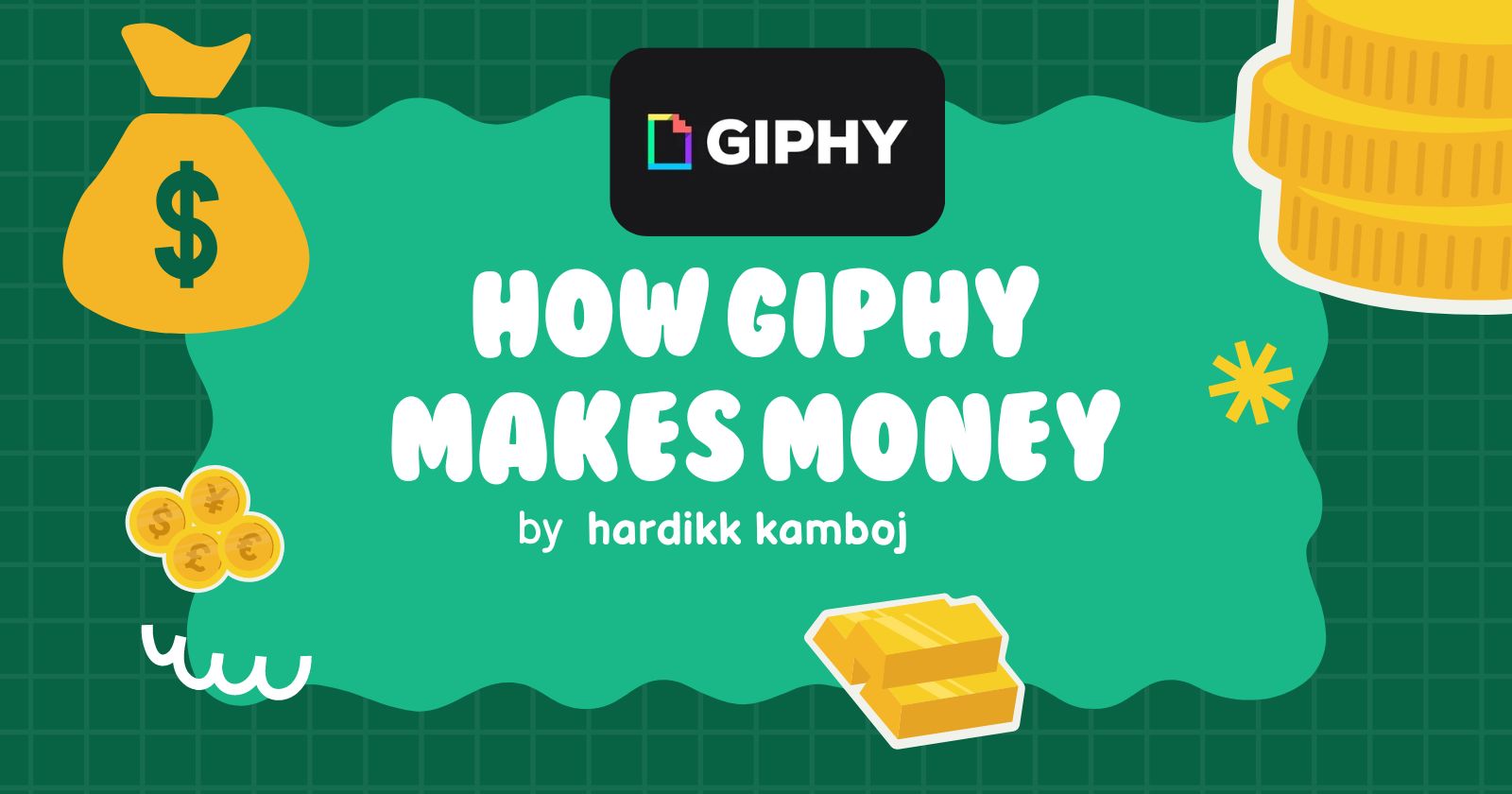How Giphy makes money 💰💸
 Hardikk Kamboj
Hardikk Kamboj
Arpit Bhayani recently tweeted that he made a video on Giphy and his insights in the video made me realize how sophisticated it is to serve 10 billion content every day. This is done via CDNs, edge networks, and other advanced infrastructure features that Giphy leverages as he pointed out in the video. But then a question was raised in my head: how does Giphy actually make money?
This curiosity led me to my research and here’s what I have found -

Introduction
Giphy is a company whose services we all would have used knowingly or unknowingly. My first web development project involved Giphy—I clicked a button, and a GIF of Goku going Super Saiyan appeared. Technically speaking Giphy is a company that provides social media and messaging platforms with animated GIF images that can easily be embedded in posts and messages. However, it is not obvious how Giphy generates revenue.

Importance of monetization strategies for platforms
Now platforms like Giphy offering free services require monetization strategies which are important for maintaining operations, growing the business, and keeping the lights on. Giphy’s revenue primarily comes from creative partnerships with brands, sponsored content, licensing deals, and other strategic collaborations. Let’s dive deep into all of them.

Sponsored GIFs
What is Sponsored GIFs?
One of Giphy's key monetization methods is through sponsored GIFs. These are GIFs created in collaboration with brands, where the brand’s product or message is embedded into the animation.
How Brands Promote GIFs in Search Results
Sponsored GIFs are featured when users search for specific keywords. For example, when Coca-Cola ran a campaign for their “Share a Coke” initiative, users who searched for terms like "celebrate" or "cheers" would see Coke-branded GIFs at the top of their search results.
Revenue Via Sponsored Content
Brands pay Giphy to create and promote these sponsored GIFs. In return, they get to engage with a wide audience in turn boosting brand awareness and customer interaction. For example, Nike has used sponsored GIFs during the launch of new shoes, allowing users to share fun, branded content with other people.

Branded Content
What is Branded Content?
Branded content refers to custom GIFs that are created in collaboration with brands to reflect their identity and message. These GIFs are often tailored to specific marketing campaigns or events.
Collaboration Process Between Brands and Giphy
Brands work with Giphy’s creative team to develop GIFs that align with their marketing objectives. For example, Disney partnered with Giphy to release branded GIFs promoting its movie "Frozen 2." These GIFs gained massive popularity as they were widely shared across social media platforms.
Benefits for Brands Creating Unique Content
By creating branded content, companies can engage users in a way that feels organic and entertaining. Since GIFs are so widely shared on social media, branded GIFs often get viral reach.

Licensing Deals
Licensing GIFs
Another significant revenue stream for Giphy comes from licensing deals, where companies pay to use GIFs in their own media or marketing campaigns. Allowing exclusive content to be featured within its library. For example, brands like The Office (NBC) have licensed GIFs from the show, which are widely used across social media for both personal expression and marketing purposes. This allows brands to monetize their content outside traditional channels and also gain popularity among people who have not watched it yet.

Factors Determining Artist Earnings
Giphy facilitates deals between artists and brands for the use of creative content. For example, when media outlets like ESPN or Buzzfeed use Giphy’s licensed GIFs for promotional purposes, artists can earn a portion of the licensing fees.
Examples of Business and Brand Use in Marketing
Many brands use licensed GIFs in their digital marketing, advertisements, or websites to create more dynamic, engaging content. For instance, major studios like Universal Studios have licensed GIFs for movie trailers, helping promote upcoming releases through GIF animations.

Support for Artists and Content Integrity
Giphy's Approach to Supporting Artists
Giphy provides a platform where creators can showcase their work and even monetize it through partnerships and licensing. For instance, well-known GIF creators, like artist Mat Voyce, have had their work featured in brand partnerships, earning recognition and compensation through these collaborations.
Importance of Maintaining Channel Integrity
To maintain trust and engagement, Giphy ensures that sponsored content and branded collaborations are clearly marked. They also prioritize the integrity of the platform by enforcing guidelines around content creation.
Intellectual Property Considerations and Credit Attribution
Giphy is committed to ensuring that content creators are credited for their work and that intellectual property rights are respected. This helps build a sustainable ecosystem where artists and brands alike can thrive. For instance, popular GIF creators can now have their GIFs credited and even potentially licensed for campaigns with companies like Netflix or HBO.

Conclusion
Giphy’s monetization strategy is a blend of sponsored content, branded collaborations, licensing deals, and partnerships with artists and companies. These methods allow them to sustain a free-to-use platform while offering value to brands and users alike.
As the demand for GIFs continues to grow, and with Giphy’s deep integration into social media and messaging platforms, their revenue potential seems set to expand, offering new opportunities for brands, artists, and the platform itself.

If you liked what you read and want more interesting topics coming your way do consider following!
Twitter - hdkamboj
Subscribe to my newsletter
Read articles from Hardikk Kamboj directly inside your inbox. Subscribe to the newsletter, and don't miss out.
Written by

Hardikk Kamboj
Hardikk Kamboj
Hey I talk about tech, experiences, and my learnings here!